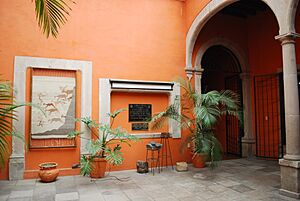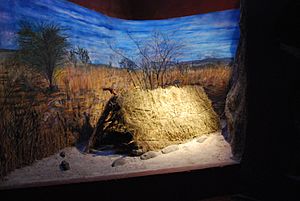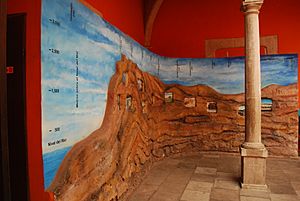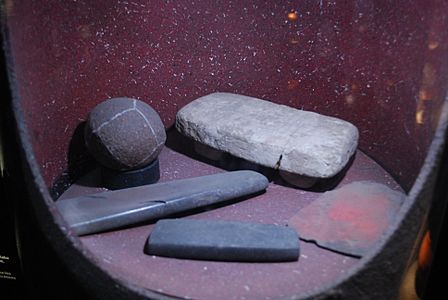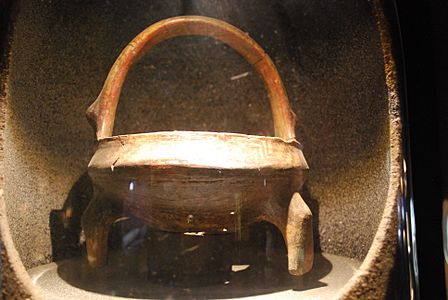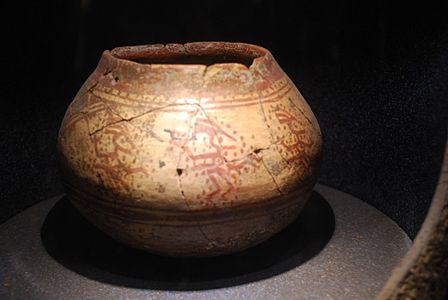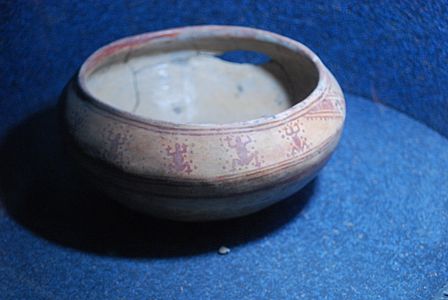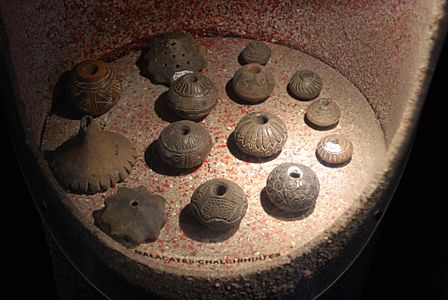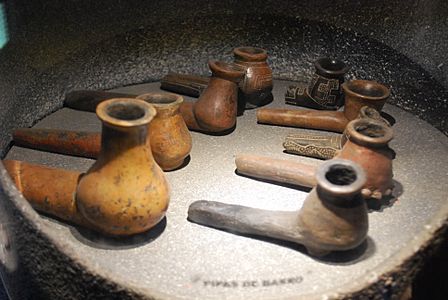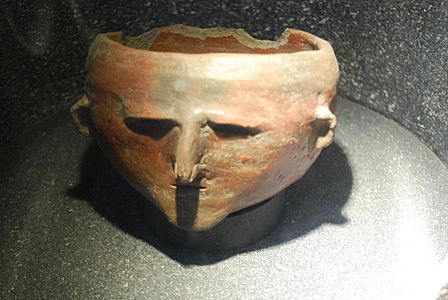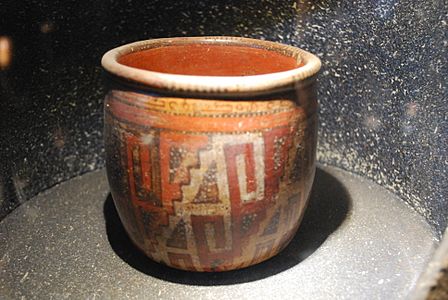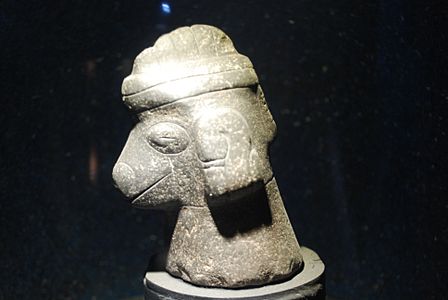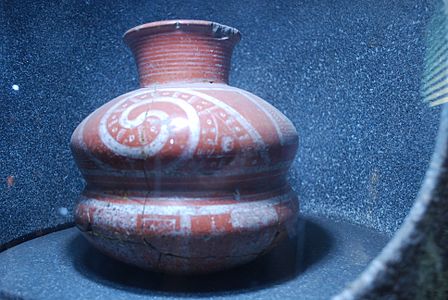Ganot-Peschard Museum of Archeology facts for kids
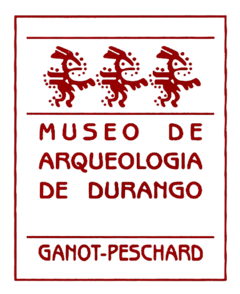 |
|
 |
|
| Lua error in Module:Location_map at line 420: attempt to index field 'wikibase' (a nil value). | |
| Established | August 3, 1998 |
|---|---|
| Location | 315 Zaragoza, Zona Centra Durango, Mexico |
| Type | Archaeology museum |
The Ganot-Peschard Archaeology Museum is a cool place in Durango, Mexico, where you can learn about ancient history. It helps keep the history of the native people of Northern Mexico safe and remembered.
The museum has lots of old things found in the area. These include burial pots (called urns), skulls, bowls, arrowheads, tools, and cool jewelry. These items belonged to people who lived there long before the Spanish arrived. Its main goal is to protect and share the ancient treasures of Durango and nearby states like Zacatecas, Sinaloa, Nayarit, and Jalisco.
The Ganot-Peschard has seven main rooms you can explore. These rooms cover topics like the Stone Age, Loma San Gabriel, Chalchihuita Culture, Guadiana Culture, Aztatlán Culture, Rock Art, and how archaeologists study the past.
Since it opened, more than 250,000 people have visited the museum.
Contents
About the Museum Building
The building where the Ganot-Peschard Museum is located was built a long time ago, at the end of the 1800s. Over the years, it was used as a house, a printing shop, and even a place to store state records.
Today, this building is recognized as a historical monument. It is protected by the National Institute of Anthropology and History (INAH).
How the Museum Started
The museum building was fixed up in 1998 by a historian named Javier Guerrero Romero and an architect named Juan Águila. It officially opened as a museum on August 3, 1998. The main idea was to save and share the amazing ancient history of Durango and the areas around it. This includes the states of Zacatecas, Sinaloa, Nayarit, and Jalisco.
The Ganot-Peschard Museum still works hard to meet its main goal. It aims to protect, study, and share the archaeological heritage of Durango. It's a very important place for learning about the native people. These groups have lived in Durango, Zacatecas, Sinaloa, Nayarit, and Jalisco for over 15,000 years!
Exploring the Museum Building
The outside of the museum building is quite simple. It has a main entrance gate framed with stone. Inside, the museum is not very big, with seven permanent rooms for exhibits.
One special room is about the Loma San Gabriel culture. It shows the types of homes and tools these people used about 3,000 years ago. Some experts believe this culture might be connected to today's Coras, Huichols, and Tepehuanes who still live in Durango.
The museum also has a lobby, a central patio, and two arched walkways. Here, you can see a large mural of the State of Durango. It shows the different parts of the state, like the Semi Desert, the Plains, the Valleys, the Sierra Madre Occidental mountains, and the Quebradas (deep canyons).
Besides its exhibits, the museum offers fun activities. You can join guided tours, go on walks to ancient sites, try clay modeling, and even take saddlery courses.
Museum Collections
The museum's permanent exhibits cover different time periods and cultures. Here are some of them:
- Paleo-Indico y Arcaico: This exhibit shows items from about 12,000 to 2000 BC.
- Loma San Gabriel, Primeros Asentamientos: This covers the first settlements from 1000 BC to the present.
- Cultura Chalchiuites: This exhibit focuses on the Chalchiuites culture, from 200 to 850 AD.
- Cultura Guadiana: This covers the Guadiana culture, from 850 to 1300 AD.
- Cultura Aztatlán: This exhibit shows the Aztatlán culture, from 1350 AD until the Spanish arrived.
- Pinturas Rupestres: This section is about Rock Art.
- Método arqueológico: This explains how archaeologists study the past.
Many of the items in the museum were collected by Dr. Jaime Ganot Rodríguez and Dr. Alejandro Peschard Fernández. They spent over 30 years researching and finding these treasures.
The Chalchiuites Culture (200-850 AD)
One of the main exhibits is about the Chalchiuites culture. This culture existed from about 200 to 850 AD. The museum explains how this culture grew and its connections to the powerful Teotihuacan empire:
The Teotihuacan empire started to grow by trading with other areas. Their trade routes reached as far as the Southwestern United States. Trading for turquoise was very important.
Following these trade paths, astronomers from Teotihuacan found a special spot. This was the northernmost place where the sun moves during the year. They built a special religious center there in Alta Vista, Chalchiuites, Zacatecas. This spot, which is now on the Tropic of Cancer, worked like an observatory. It helped them figure out the equinoxes, which are times when day and night are about equal length.
The Chalchiuites culture began when the Teotihuacan people met the local people already living there. It was a mix of both cultures. By 850 AD, this culture had mostly disappeared, just like the Teotihuacan empire.
The Guadiana Culture (850-1300 AD)
Another important exhibit shows items from the Guadiana culture, which lived from 850 to 1300 AD:
Around 850 AD, a new expansion began in central Mexico. To the north were the Tolteca people. They mainly traded using two routes. One went through the middle of the country, and the other went west towards the Pacific coast.
The Toltec's use of the first route caused some of the Chalchiuites people to move north. They settled in parts of what is now Durango. When they met the people already living there, a new culture formed. At first, this group was called the Guadiana Branch of the Chalchiuites. But now, it's known as a completely different culture. Their main religious center was La Ferrería, which is very close to the modern city of Durango.
Selected collection highlights
The Aztatlán Culture (1350 AD)
The museum's fifth exhibit features items from the Aztatlán culture, dating back to 1350 CE. This section is titled Hasta el contacto Español, meaning "Until the Spanish contact":
The Aztatlán people lived in a large area of Western Mexico and along the Pacific coast, reaching up to the state of Sinaloa. Some groups had to move through the Sierra Madre Occidental mountains to the center of the state of Durango. Many ancient sites show proof of this journey.
Archaeologists have found many interesting things from this culture. These include pottery, copper objects, burial urns, and evidence of intentional head shaping. They also found pipes, tools, and items decorated with gods from the Mesoamerican pantheon (their group of gods).
The Aztatlán culture mixed with the Guadiana culture. One special art style from these people is a type of mixed ceramic pottery. It appeared in a final period close to when the Spanish arrived, and it's called El Molino.
Selected collection highlights
See also
 In Spanish: Museo de Arqueología Ganot-Peschard para niños
In Spanish: Museo de Arqueología Ganot-Peschard para niños


